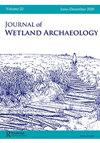Wetland Reclamation and the Development of Reclamation Landscapes: A Comparative Framework
Q1 Arts and Humanities
引用次数: 2
Abstract
ABSTRACT Wetland reclamation has occurred under diverse geographic and socio-political conditions. A single reclamation event however, forms only one step in the evolution of what we refer to as reclamation landscapes. This paper assesses how interacting physical geographical, cultural and biological processes shape the landscape diachronically. Using a triangular model, we compare two wetland landscapes: the Pontine marshes in central Italy, reclaimed as part of Rome’s early Imperial expansion; and the Onlanden area in the northern Netherlands, reclaimed by emergent state societies in the Middle Ages. Reclamation turned out not fully resilient from a cultural perspective in both cases, as physical geographical and biological processes continued to raise challenges in both reclamation landscapes. It is argued that the triangular model offers potential to systematically explore the drivers behind landscape evolution comparatively. A better understanding of such drivers may in turn improve current landscape management policies, including rewilding efforts.湿地填海与填海景观的发展:一个比较框架
湿地复垦发生在不同的地理和社会政治条件下。然而,单一的填海活动只构成我们所说的填海景观演变的一个步骤。本文评估了自然、地理、文化和生物过程的相互作用如何历时性地塑造景观。使用三角模型,我们比较了两种湿地景观:意大利中部的Pontine沼泽,作为罗马帝国早期扩张的一部分被开垦;以及荷兰北部的奥兰登地区,在中世纪被新兴的国家社会收回。在这两种情况下,从文化角度来看,填海并不是完全有弹性的,因为自然地理和生物过程继续给填海景观带来挑战。本文认为,相对而言,三角模型为系统探索景观演变背后的驱动因素提供了潜力。更好地了解这些驱动因素可能反过来改善当前的景观管理政策,包括重新野生化的努力。
本文章由计算机程序翻译,如有差异,请以英文原文为准。
求助全文
约1分钟内获得全文
求助全文
来源期刊

Journal of Wetland Archaeology
Arts and Humanities-Archeology (arts and humanities)
CiteScore
1.40
自引率
0.00%
发文量
6
期刊介绍:
The Journal of Wetland Archaeology publishes a wide range of contributions in all fields of wetland archaeology. It includes scientific and methodological features, geoprospection, environmental reconstruction, wetland hydrology, cultural aspects of wetland archaeology, as well as conservation, site management, legislation, and site protection. All periods and all geographic regions are covered.
 求助内容:
求助内容: 应助结果提醒方式:
应助结果提醒方式:


